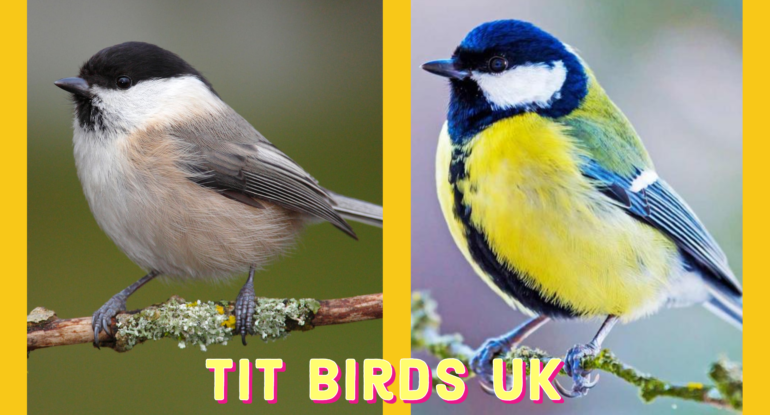The species of Tit birds are dominate to the other birds. If you can see them close up you get a clear understanding of their size and the characteristics. They generally can live for two or three years however they are able to live longer. In the UK you are able to see eight varieties of tit birds UK. That include six species prevalent in gardens throughout the nation.
They’re extremely territorial during nesting and are often seen as flocks mix. They possess a friendly and social personality and will be a constant garden visitor. If you want to draw these tit birds into your garden, make use of many seeds such as nuts, insects, and mealworms.
The majority of Tit Birds UK are all-year-round garden birds. You might observe an increase in visitors during the time of migration which is when birds arrive from colder climates starting in October.
Classification and Types Tit Birds UK
| No. of species | Name | Scientific Name | Colour | Size | Weight | Population | Where to found |
| 1. | Breaded Tit | Panurus biarmicus | Long black moustache-like streaks to each side of the beak. | 12.5cm | 12-18g | 695 pairs | Found in Southern, Eastern North West England. |
| 2 | Blue Tit | Cyanistes caeruleus | A colourful mix of blue, yellow, white and green makes the blue tit one of our most attractive tits | 12cm | 11g | 3,400,000 territories | They’re widespread and found across the whole of the UK with the exception of some Scottish islands. |
| 3. | Long tailed Tit | Aegithalos caudatus | The long-tailed tit is easily recognisable with its distinctive colouring, a tail which is bigger than its body, and undulating flight. | 14cm | 7-10g | 380,000 territories | Long-tailed tits are found across the UK except for the far north and west of Scotland. |
| 4. | Great Tit | Parus major | green and yellow with a striking glossy black head with white cheeks | 14cm | 18g | 2,350,000 territories | Great tits can be seen in woodlands, parks and gardens across the UK. |
| 5. | Coal Tit | Periparus ater | the coal tit has a distinctive grey back, black cap, and white patch at the back of its neck. | 11.5cm | 8-10g | 660,000 territories | mainly found in England |
| 6. | Willow Tit | Poecile montanus | blue and great tits in size, with no yellow, green or blue. They have a large sooty-black cap extending to the back of the neck and a small untidy black bib. | 11.5cm | 8-14g | 2,750 pairs | mainly found in England and Wales, with some in south Scotland. |
| 7. | Marsh Tit | Poecile palustris | mainly brown bird, with a shiny black cap, dark ‘bib’ and pale belly. | 11.5cm | 10-13g | 28,500 territories | occur across England and Wales |
| 8. | Crested Tit | Lophophanes cristatus | the crested tit’s ‘bridled’ face pattern and the upstanding black and white crest make this a most distinctive species. | 11.5cm | 10-13g | 1,000 – 2,000 pairs | Crested Tits are found only in the Caledonian forests of Scotland. |
1. The Bearded Tit
They are brown, long-tailed tit birds UK, usually seen flying rapidly across the top of a reedbed. Males tits have black ‘moustaches’ rather than ‘beards’. These noisy and sociable birds are known for their ‘ping’ sounds. You can find Bearded Tits in the majority of northern and eastern England. However there is a tiny, but populated region in the north-west region of England.
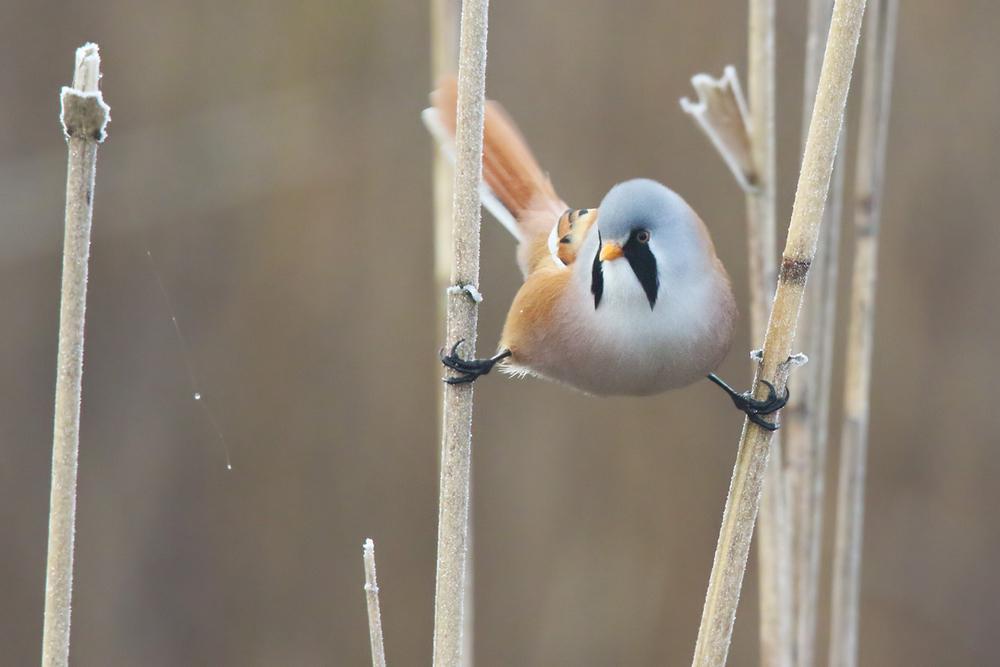
2. The Blue Tit Birds UK
This Blue Tit birds is found in common place in Britain and is one of the first birds that visit on the table of birds. These are extremely adaptable birds and are a frequent visit to gardens. They measure just 12 cm long and weigh just 11 grams. The blue tits typically live for 2-3 years, however they may live for longer.
They are easily distinguishable due to its blue-ish crown. White is the forehead while beneath, the feathers are coloured sulphur. In the breeding season, Blue Tits lay between 7 and 13 eggs. The babies of Blue Tits can be very demanding. On average, they have to eat 100 caterpillars per day every day.
Read in detail about: UK Ladybirds
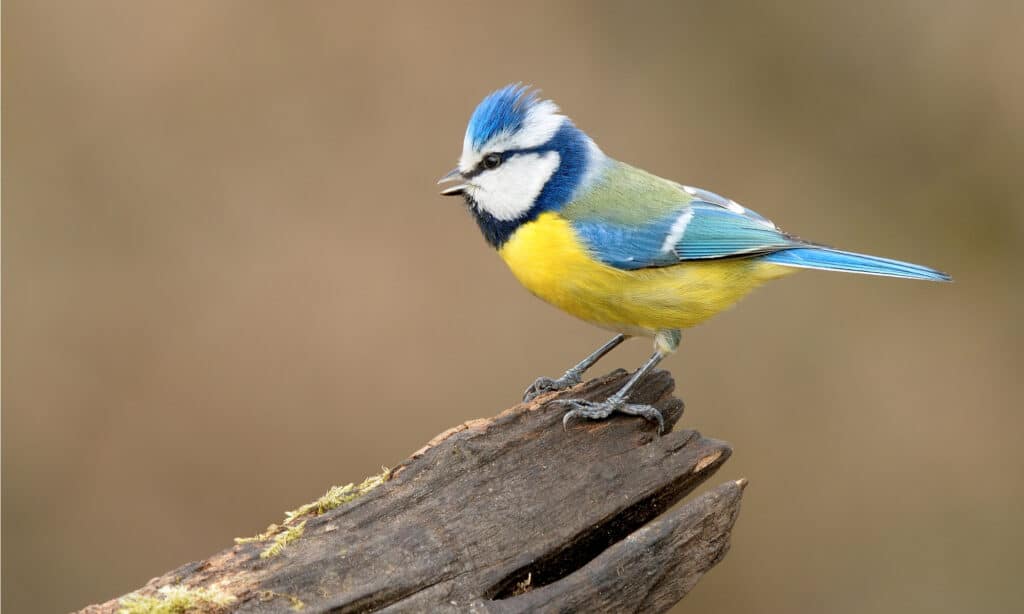
3. The Long-Tailed Tit
One of the most sought-after Tit birds to see in British garden is the delicate Long Tailed Tit. They aren’t members of the Tit family despite their name, and they are related to a variety of species of tits found in Asia.
The long tailed tit birds UK are loud, social birds and are a regular sight in the garden. They are gorgeous and delicate with just 14 centimetres long, not including their tails that are long. These tit birds weigh about 9 grams and can live for two years. They are most at risk in the winter months when temperatures are cold. They lay anywhere from 8 to 12 eggs.
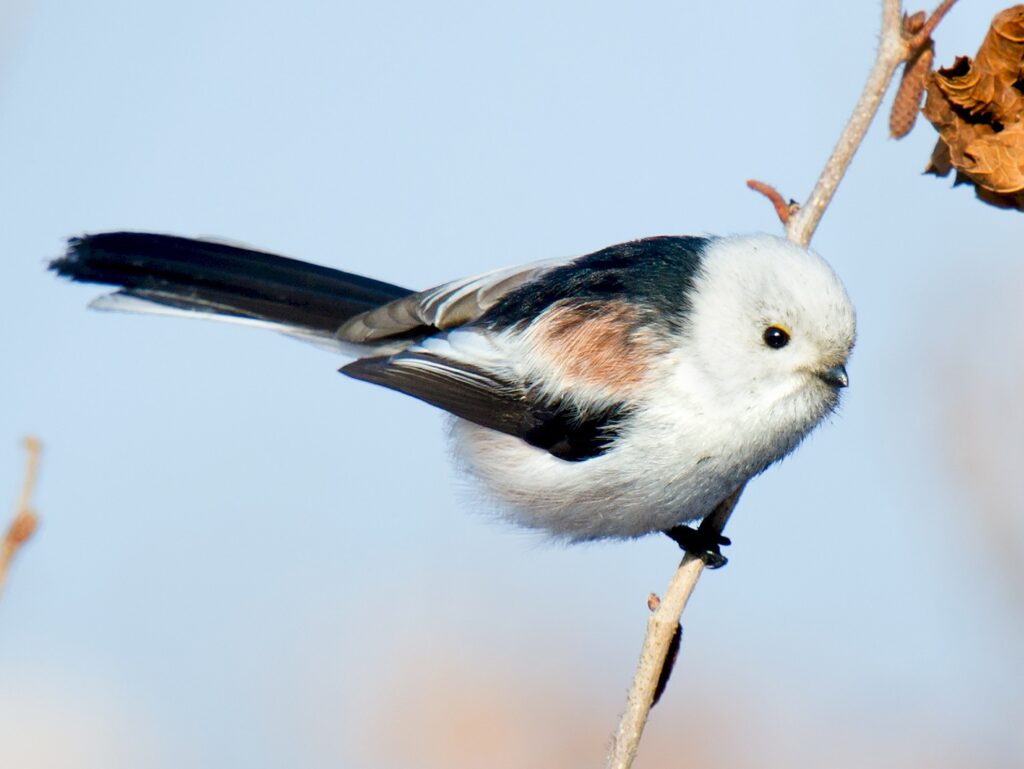
4. The Great Tit
The beautiful Great UK Tit birds is the largest bird of the family of tits, measuring 12.5-14cm across. The Great Tit is a distinctive bird. They sport a yellow-lemon breast, a black/blue crown, a black neck, head, and throat.
Great Tit birds UK are commonly found in deciduous and mixed woodlands. They consume a large amount of caterpillars, seeds, and berries. They lay between 5-12 eggs. The eggs hatch within two weeks, and the young birds will begin to fly within three weeks.
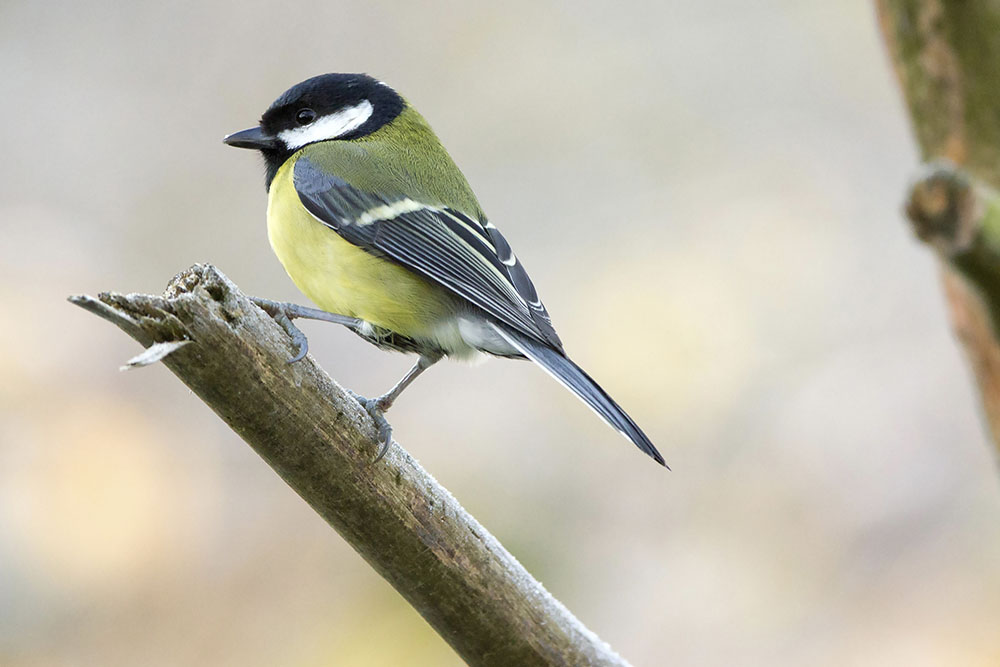
5. The Coal Tit Birds UK
The Coal Tit isn’t as well-known as other Tit birds . They are the most tiny of the tits measuring 10-11 centimetres in length. Their feather colour is not as vivid as those of the Great Tit. This Tits are a nesting species that build pits in the earth frequently selecting mice’s burrows.
They begin breeding in May, but they typically, they produce only one clutch per year. They lay between 7 to 11 eggs. The eggs hatch within two weeks, and the baby birds are begin to fly two weeks later.
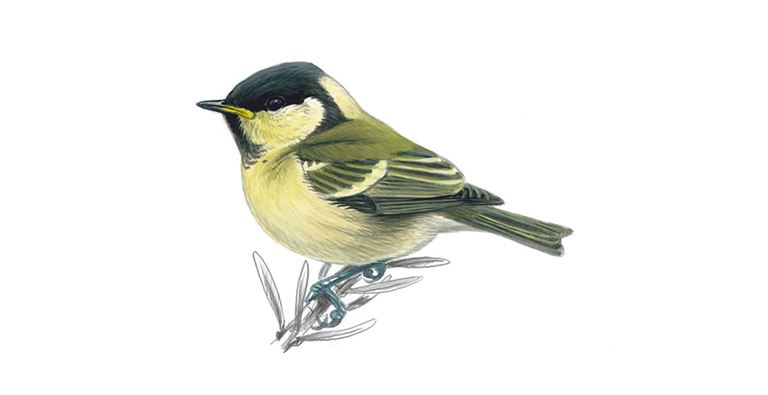
6. The Willow UK Tit Bird
This Willow Tits are large birds. They are somewhere between Blue Tits and Great Tits. They wear caps of black and matching bib with white cheeks. However the feathers under generally are a dull grey. The size of the hole for entry is vital.
Willow Tit’s hole is similar to the one to be between 2 and 3 inches wide. The female lay eggs in a clutch of 6 to 8 eggs each month of April. The time span for this Willow Tit is approximately 3 years.
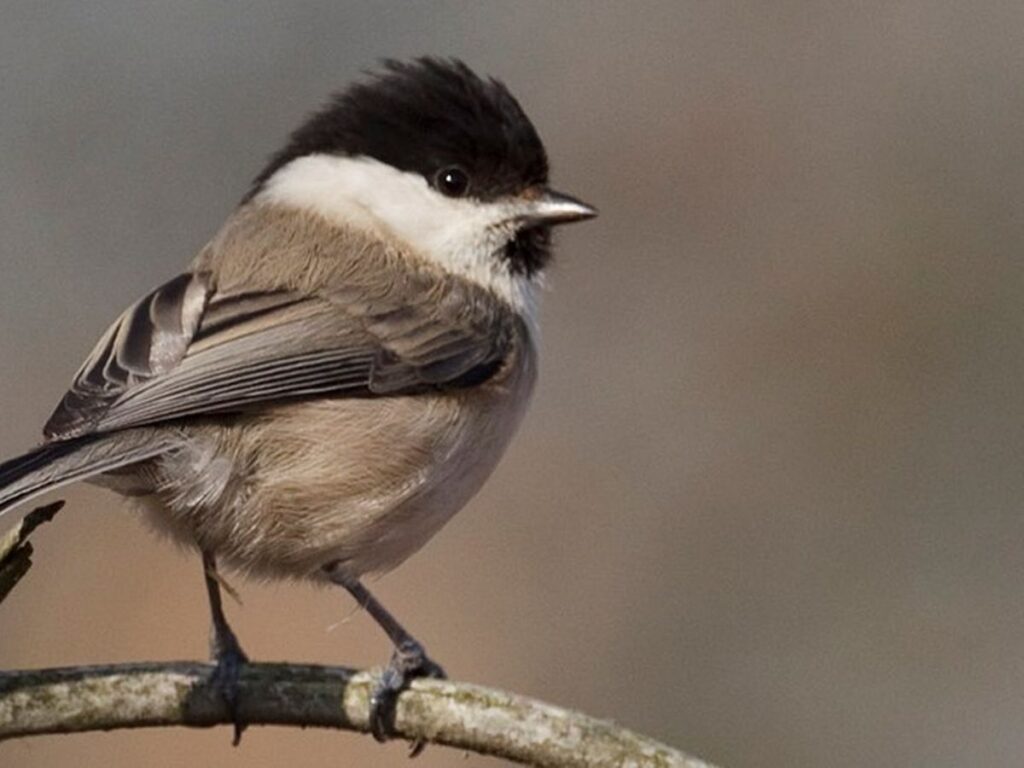
7. The Marsh Tit Bird
The Marsh Tit birds UK is very similar to the Willow Tit. They have a glossy black cap with a shiny black bib, and the feathers beneath are light. These marsh birds tits prefer broadleaf woodlands as well as gardens and parks. They are more likely to stay in damp places.
The Tits birds feed on insects seeds, and berries. They as with Coal Tits may try to keep food in storage for times when they are in need. They also make nests in holes or trees, but they do not make their nests out of their own. The tits lay between 7 and 9 eggs.
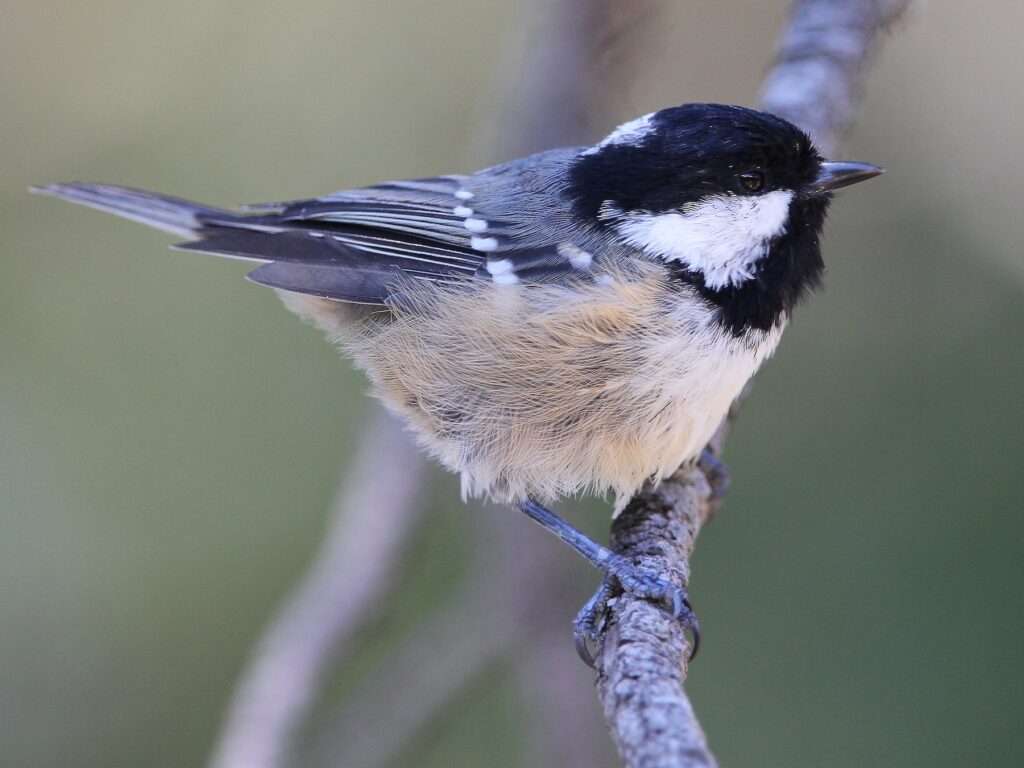
8. The Crested Tit
If you are in Scotland or near coniferous forest, then you might have the opportunity to view the gorgeous Crested Tit. It is an imposing UK tit birds, easily identifiable by its peaked tuft that is on one of the sides.
With its short, thin beak feathers on its head are white and black while on wings they’re black and brown. They measure 11.5 cm long and weigh between 10 and 13 grams. Crested Tits is found limited in Scotland.
Read to find out more about Sea birds UK
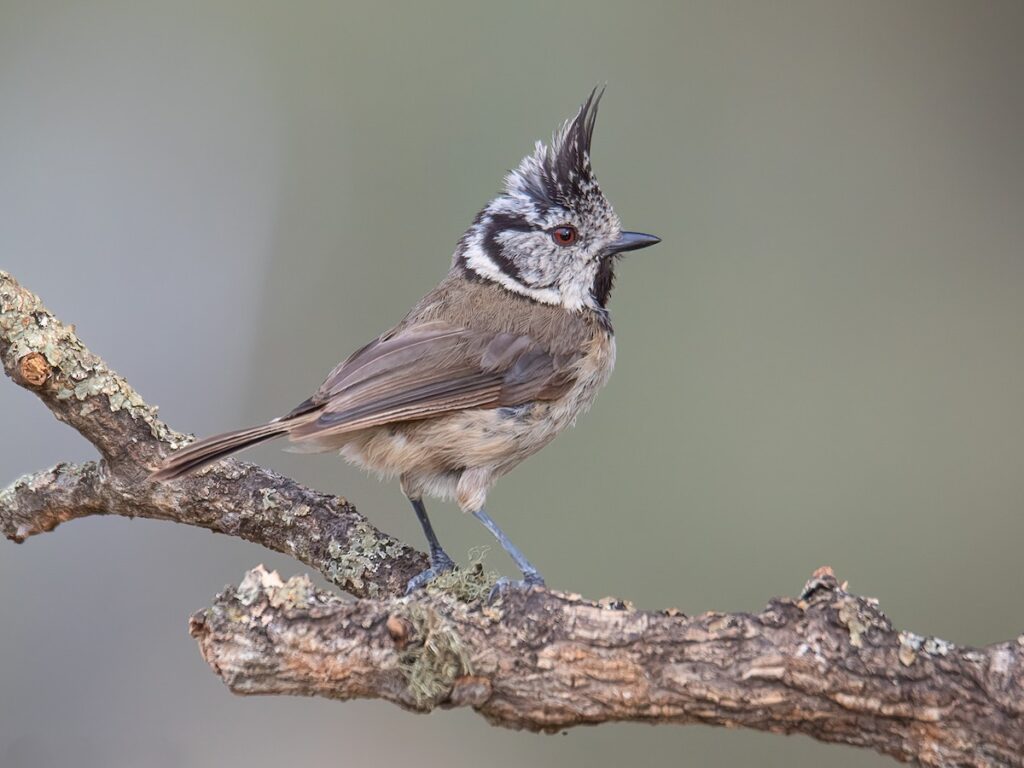
Tit Birds UK Characteristics
1. Tits are tiny birds that have simple or vibrant plumages, long legs, robust feet as well as small, triangular bill.
2. Many species of tit birds UK have Crests.
3. They are vulnerable at feeders and the risk comes from cats and birds of prey such as Sparrow hawks.
4. Generally, tit birds have a lifespan of two or three years but they can live for longer.
5. When you see them up close, you gain a greater idea of size and characteristics.
6 These tit birds are really Eye catching Birds.
7. They are always on the go, flitting about in trees looking for insects, and darting in and out of sight.
8. Mostly Tits Males and females birds look the same.
9. They are most often seen as single birds or in pairs.
10. They are resident species, and don’t move around much through the year.
Tits Birds UK song/ voice
These tits small birds are called singing birds. Additionally they also have lots of different calls, most of which are variations on little peeping whistles. Great tits are very vocal birds. Their song is a two-note descending call repeated several times, usually described as ‘tea-cher, tea-cher!’.
Blue tits also have a churring alarm call. It sounds a bit like: ‘tsee-tsee-tsee-di-di-di-di’. The first part is like a high pitched whistle, and then it dives down into a bit of a trill at the end. Same as the great tit, the coal tit song is a repeated call of two descending notes: ‘tea-cher, tea-cher’, but it’s higher and faster and a bit slurred.
Tit Birds Behaviour
They’re quite assertive tit birds for their size, and are not shy about getting their fair share at feeders. You’ll often see them nabbing a peanut or a sunflower seed. They also eat insects, particularly caterpillars, and seeds and nuts in the winter. Mostly they are resident birds.
The tit birds UK are incredibly active, and are out non-stop searching for caterpillars and other invertebrates to feed their hungry chicks. They often make hit and run trips to bird feeders and will pick up nuts and seeds quickly before taking them elsewhere to eat. You may also see them on the ground, particularly in the autumn and winter, hunting for seeds and nuts.
Birds Tits Wrapping Up
If you want tit birds family into your garden, put some quality food regularly. All birds become used to this regular supply and will rely on it. After that they will continuously come to your garden. In addition to bird food, try to make the garden as natural as possible. Plant with natural flowers in garden.
Don’t worry your garden, whether large or small, can benefit nature. Aim to create an eco-environment which means encouraging insects, mammals and birds. Create a natural pond, an insect home or a log pile also. Try adding some of these flowers like Ox-eye daisy, harebells, red clover, chamomile, wild thyme or bulbous buttercup to your borders or grow in pots.
Tit Birds FAQs
Q1. What is Tit birds?
Tit birds are small birds with short bills and short legs.
Q1. Are UK tit birds different from other birds?
Yes tit birds are different from other birds because of sizes and different colours.
Q3. How many species of tit birds found in the UK?
In the UK you are able to see 8 varieties of tit birds UK. That include six species prevalent in gardens throughout the nation.
Q4. What are tit birds UK eats?
They eats peanut or a sunflower seed. They also eat insects, particularly caterpillars and nuts also.
Q5. What is the life span of tits birds?
Generally, tits birds have a lifespan of two or three years but they can live for longer.

